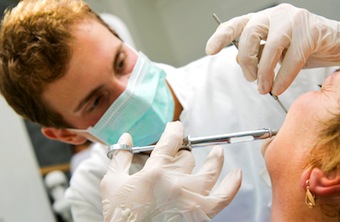Hemostasis During Restorative Procedures
One of challenges we deal with during restorative procedures is having an area that is free of bleeding. Bleeding during a dental procedure is not uncommon, but it can create a lot of issues with making impressions, placing direct restorations and/or bonding procedures to place indirect restorations.
The following is an overview of different materials and methods to help manage tissue bleeding.
Different materials and techniques used for hemostasis
Aluminum Chloride:
This is a commonly used astringent agent. It is often used in liquid form that can be used to place retraction cord in it or wet a cotton pellet to help manage any bleeding. Recently, there are many paste forms such as Traxodent, 3M Retraction Paste, Expasyl and others that can be injected around your preparation and then rinsed off a few minutes later in hopes of eliminating any cord placement need.
Ferric Sulfate:
This is another commonly used astringent agent. It works well and I have found it to be more effective in situations where aluminum chloride agents are not working well. Some common brand names are Astringedent and Viscostat and they usually vary in concentration. The main thing with these agents is that they can tend to stain restorations and/or teeth and you must rinse them very well. It can inhibit impression material from setting up and can affect bond strength adversely. You also have to remove any “clots” or areas of coagulated blood from your prepared tooth structure to avoid any issues with restoration placement or distortions in impressions.
Superoxol:
This agent is used for bleaching, but because it contains 35 percent hydrogen perioxide, it can used to help stop any minor bleeding during procedures. Wetting a cotton pellet with this on it and then using it in a dabbing motion will help manage any bleeding spots.
Epi cords:
Epi cords or retraction cords that are impreganated with epinephrine. Epinephrine is a powerful chemical agent that causes vasoconstriction that stops or reduces bleeding. The main issue is that you have to avoid using this in patients with known cardiovascular disease because epinephrine can cause an increase in heart rate as well as blood pressure.
Lasers (soft and hard tissue laser):
Lasers are being used more commonly in the dental setting and soft tissue lasers have become more affordable. They can be quick and effective at exposing margins or tooth structure that needs to be restored. The soft tissue lasers tend to offer better coagulation compared to hard tissue lasers due to their wavelength and how it interacts with the tissue.
Electrosurge:
This piece of equipment has been around for a long time and it essentially uses electrical impulses to heat the tissue to either cut or coagulate in the area you need to expose or control bleeding. Avoid using this around implants because it has been known to cause loss of osseointergration if the implant is touched during the procedure.
Local Anesthetic:
Often, you can use local anesthetic like lidocaine with either 1:100,000 epinephrine or 1:50,000 epinephrine and inject in the papilla area or near the area that you are working until it blanches the tissue. This will give you about 10 minutes to work to get an impression or to place a restoration if needed. I hope these tips help the next time you need to regain control in an area that has some bleeding.
Jeff Lineberry, DDS, Visiting Faculty.
SPEAR NAVIGATOR
Transform how your practice runs by engaging the team through
coaching and training
A guided path to excellence through structured coaching and self-guided resources that will align your team, streamline processes and drive growth. Transform your practice by implementing Spear’s proven playbooks for developing and retaining a high-performing dental team.

By: Jeff Lineberry
Date: January 8, 2014
Featured Digest articles
Insights and advice from Spear Faculty and industry experts



